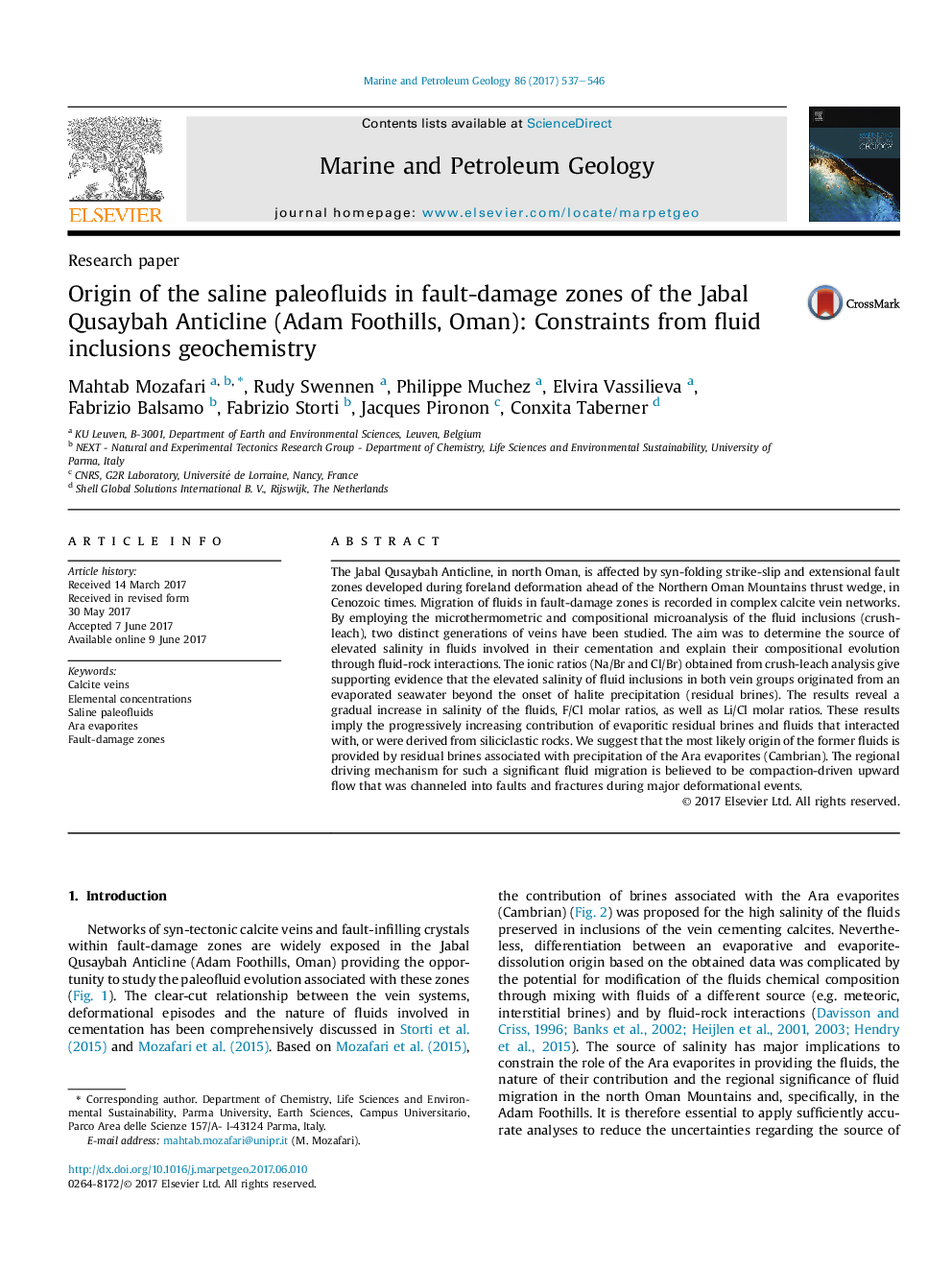| Article ID | Journal | Published Year | Pages | File Type |
|---|---|---|---|---|
| 5781992 | Marine and Petroleum Geology | 2017 | 10 Pages |
â¢The source of fluids responsible for elevated salinity in calcite cements in Jabal Qusaybah is determined.â¢They were provided by residual brines associated with precipitation of the Ara evaporites (Cambrian).â¢Progressive contribution of residual brines and fluids that interacted with, or derived from siliciclastic rocks.â¢The regional driving mechanism for the fluid migration was compaction-driven upward flow channelized into faults.
The Jabal Qusaybah Anticline, in north Oman, is affected by syn-folding strike-slip and extensional fault zones developed during foreland deformation ahead of the Northern Oman Mountains thrust wedge, in Cenozoic times. Migration of fluids in fault-damage zones is recorded in complex calcite vein networks. By employing the microthermometric and compositional microanalysis of the fluid inclusions (crush-leach), two distinct generations of veins have been studied. The aim was to determine the source of elevated salinity in fluids involved in their cementation and explain their compositional evolution through fluid-rock interactions. The ionic ratios (Na/Br and Cl/Br) obtained from crush-leach analysis give supporting evidence that the elevated salinity of fluid inclusions in both vein groups originated from an evaporated seawater beyond the onset of halite precipitation (residual brines). The results reveal a gradual increase in salinity of the fluids, F/Cl molar ratios, as well as Li/Cl molar ratios. These results imply the progressively increasing contribution of evaporitic residual brines and fluids that interacted with, or were derived from siliciclastic rocks. We suggest that the most likely origin of the former fluids is provided by residual brines associated with precipitation of the Ara evaporites (Cambrian). The regional driving mechanism for such a significant fluid migration is believed to be compaction-driven upward flow that was channeled into faults and fractures during major deformational events.
